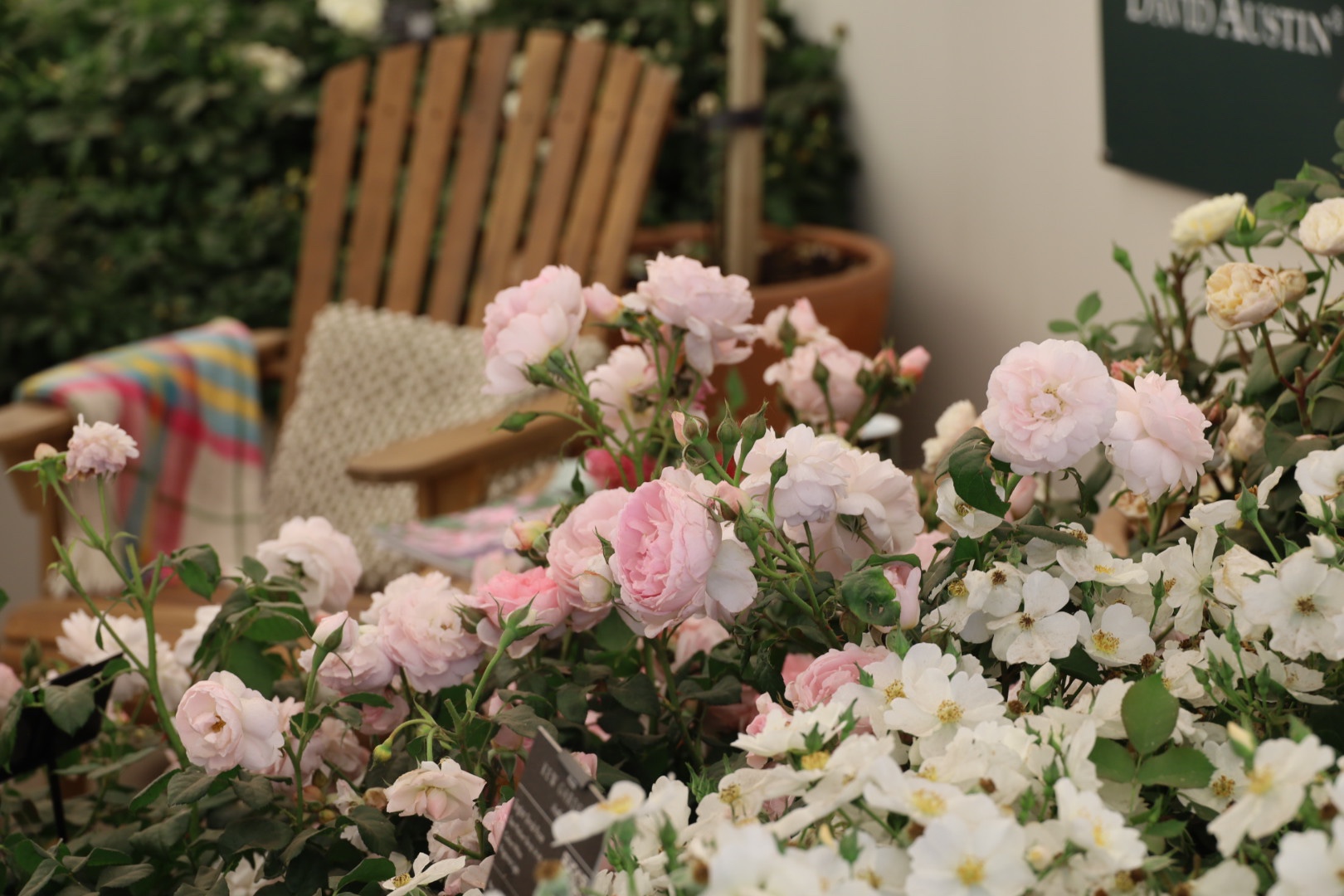The 4th of July proved a scorching day to bid farewell to what may be the last annual Festival of Roses at Hampton Court Palace. As London sweltered under another heat wave - these blazing summers now an uncomfortable norm rather than exception - I found myself rushing from the palace's own rose garden toward the marquee, camera ready and energy high, determined to capture every precious bloom before the heat could sap either my enthusiasm or my memory cards.
The urgency felt particularly acute this year. Come 2026, Hampton Court will shift to a biennial schedule, making this summer's rose festival a poignant swan song for an annual tradition that has enchanted visitors for over a quarter-century. The weight of that knowledge lent an almost elegiac quality to my wandering among the displays, each photograph feeling like a small act of preservation against time's relentless march.
The Rose Marquee's Magnetic Pull - The Theatre of Scent and Shadow
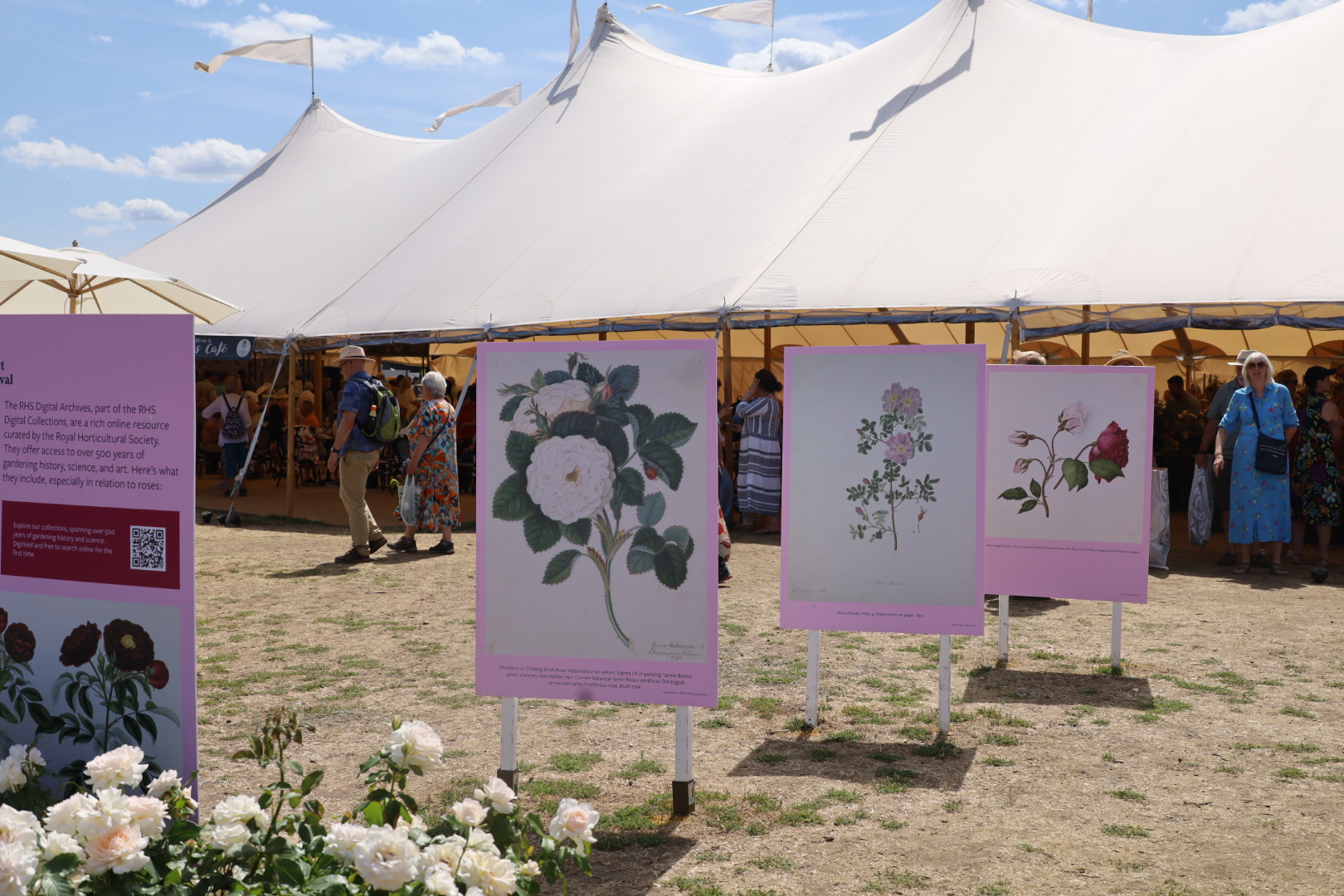
Approaching the rose marquee, I noticed Harkness Roses had claimed the coveted outdoor display space - a changing of the guard from David Austin Roses previous tenure. But the real treasures, I knew, lay within the cool shade of the marquee itself, where three titans of British rose breeding had assembled their finest offerings in a concentrated rose olfactory scent that stopped visitors in their tracks.
The contrast was immediate and welcome. Outside, the sun hammered down with Mediterranean intensity; inside, blessed shade allowed the roses to perform their magic without wilting spectators. The air hung thick with perfume—that intoxicating cocktail of old rose, fruit, and honey that makes even the most disciplined garden writer slightly drunk on scent alone.
Harkness: Jane Austen Meets Musical Romance
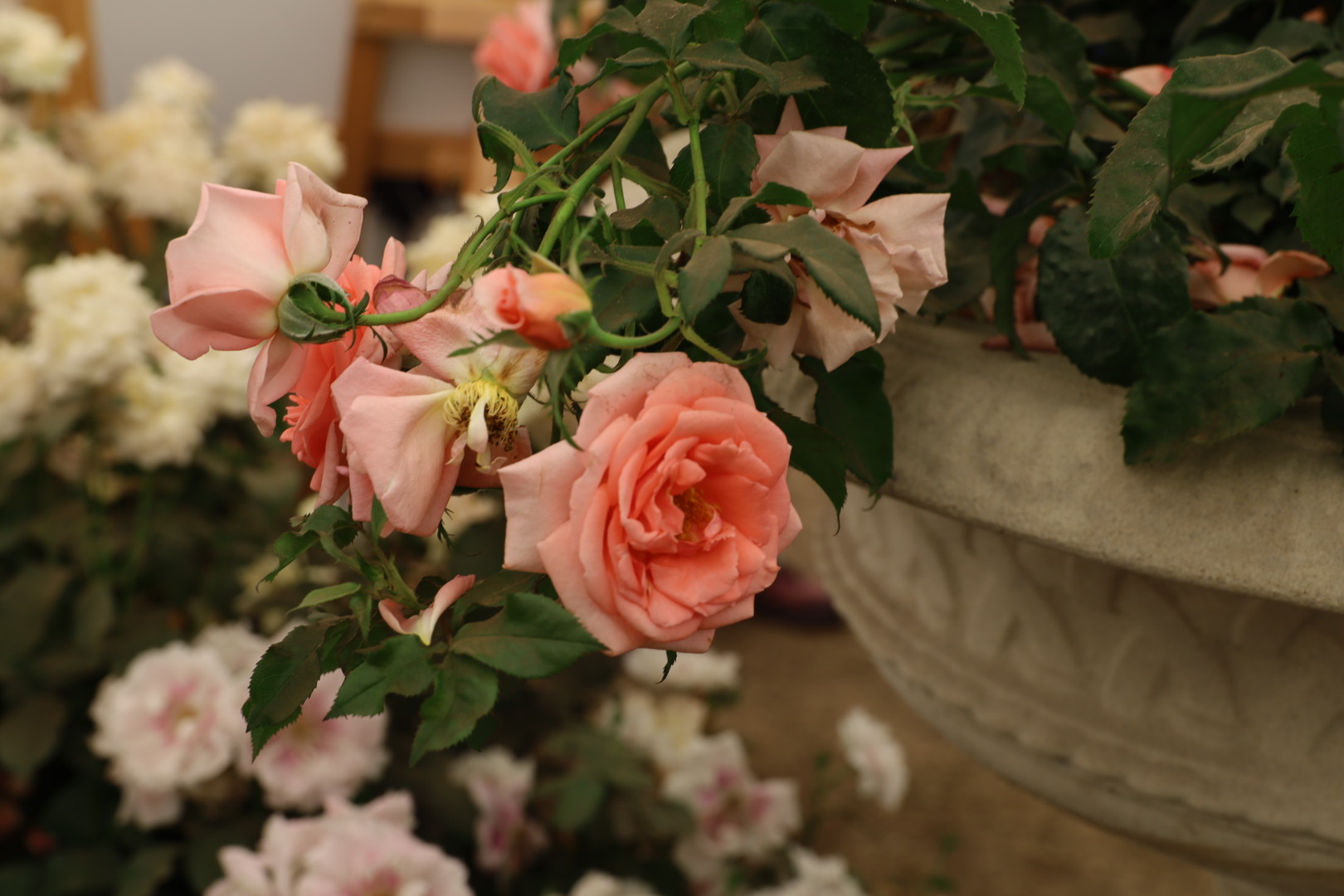
Harkness Roses dominated their area with theatrical flair, anchoring their display around a rose-draped piano that recalled their Chelsea triumph earlier this season. Yet this wasn't mere repetition - the Hampton Court iteration felt more intimate, more considered. The piano served as backdrop to their crown jewel: the Jane Austen Collection, timed immaculately to celebrate the 250th anniversary of the author's birth.
Two new introductions stole the spotlight. Rosa 'Emma' (Hardemand) presented soft pink blooms with the sort of gentle sweetness that would have graced a Hartfield garden party, while 'Persuasion' commanded attention with rich deep-pink petals tinged purple and a spicy perfume that seemed to embody Captain Wentworth's passionate constancy. The latter, in particular, ticked every box a discerning rose lover could want: spectacular color, intoxicating fragrance, and the promise of performance from June through autumn's final days.
The partnership with Jane Austen's House charity elevated the display beyond mere commerce into something approaching cultural celebration. Yet photographing these beauties proved frustrating - fellow enthusiasts clustered around the piano like bees to nectar, making clean shots nearly impossible. Such is the curse of popular excellence.
Harkness's retail area tempted with instant gratification - choose your rose, pay, and carry home that very day. In the heat, with a train journey to Waterloo ahead, I exercised admirable restraint. Though admirable restraint, I should note, felt decidedly less admirable when surrounded by such temptation.
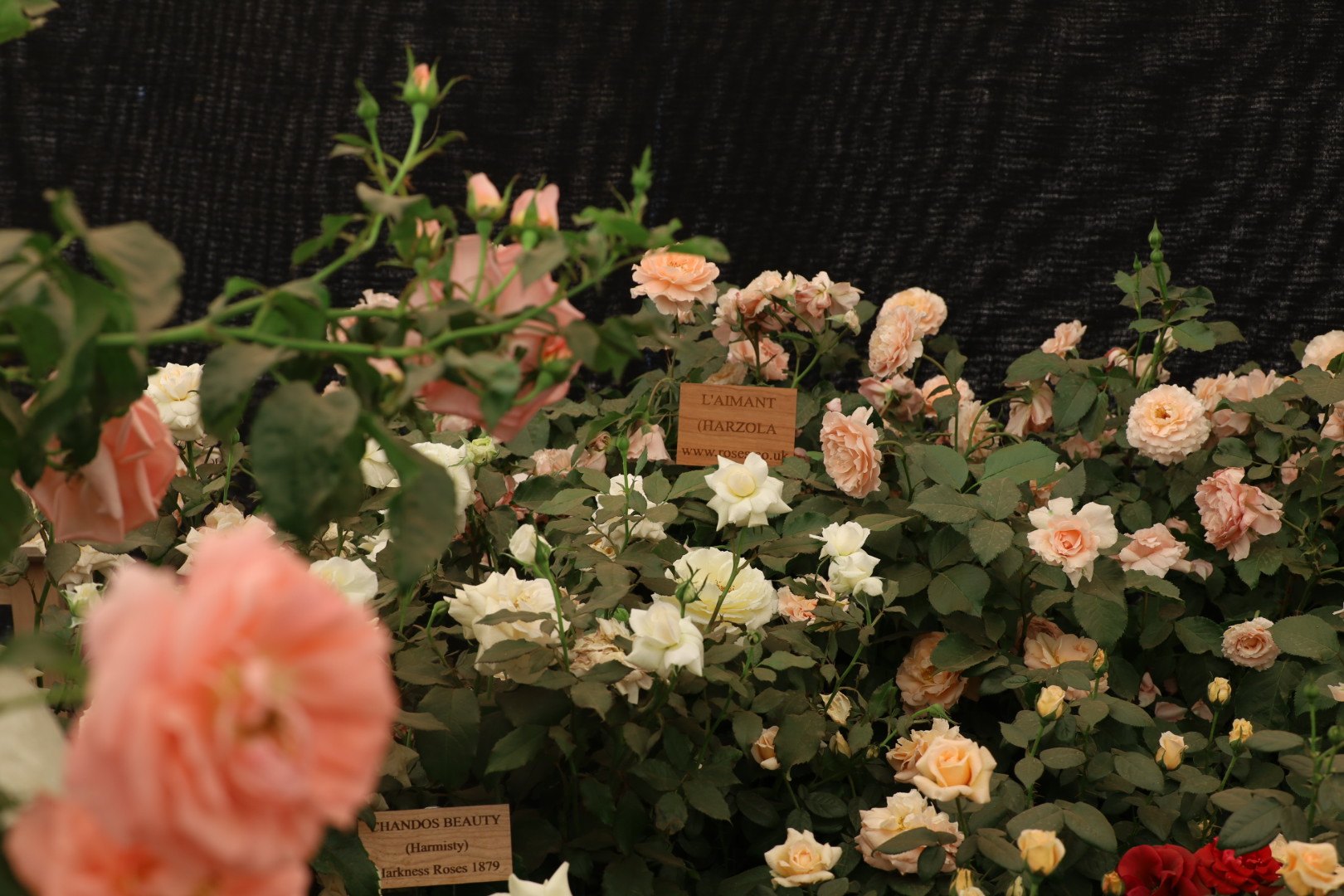
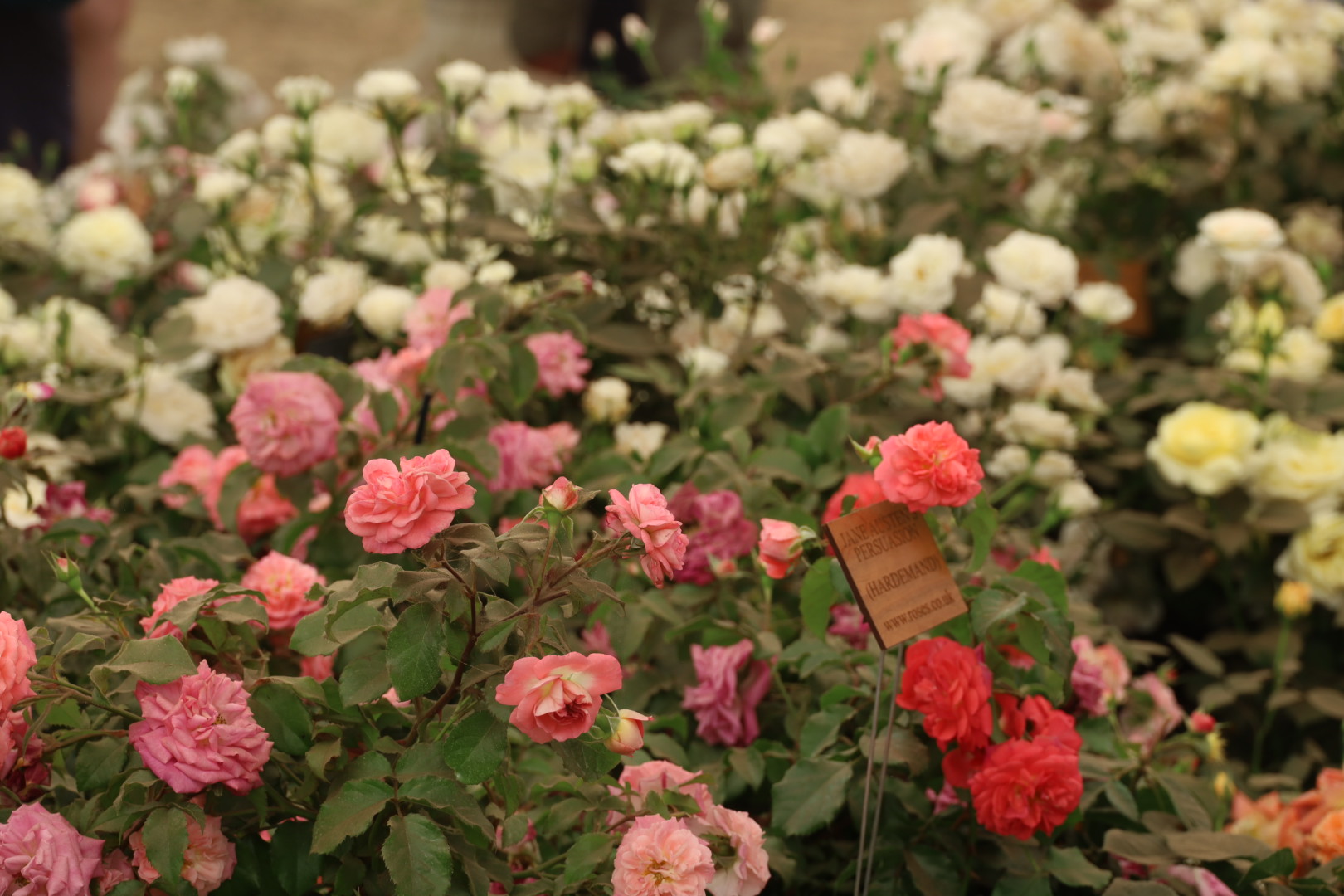
Peter Beales: The Scholar's Garden
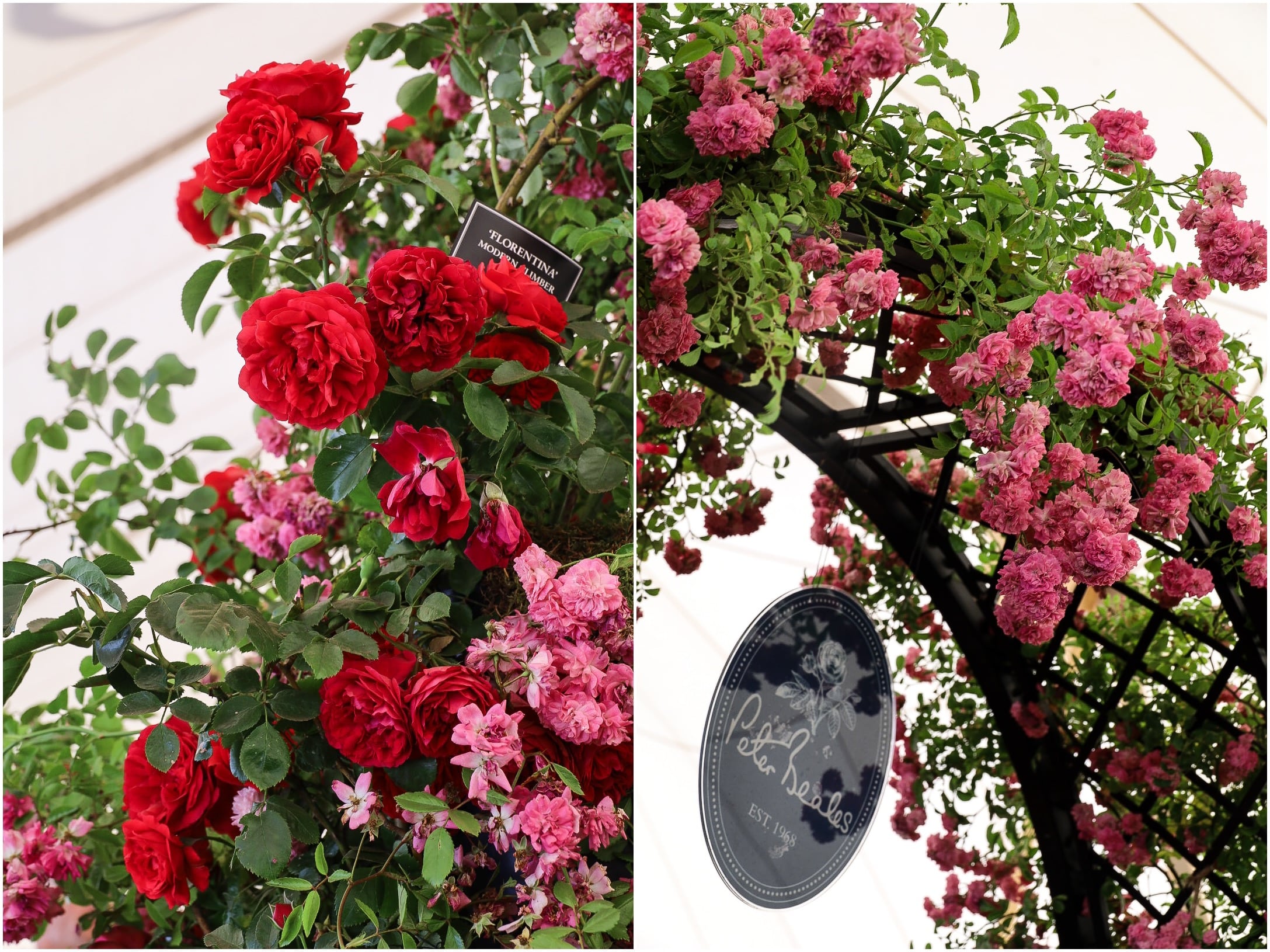
Peter Beales Roses understood the assignment perfectly. Their gold medal-winning display functioned as both aesthetic feast and living textbook, framed by two magnificent rose-covered arches that created natural galleries for exploration. After more than half a century in the trade, Peter Beales has earned the right to lecture, and their Hampton Court presence felt like a masterclass disguised as entertainment.
The centerpiece, 'Linda Lee' - a 2025 introduction bred specifically with pollinators in mind - represented a refreshing pivot toward ecological responsibility without sacrificing beauty. This wasn't virtue signaling but genuine innovation, addressing the critical challenge of creating gardens that serve both human pleasure and environmental necessity.
What truly distinguished this display was its educational ambition. Historic rose varieties shared space with modern pollinator magnets, creating a timeline that traced the evolution of rose breeding from romance to responsibility. The labeling was exemplary - clear, comprehensive, and genuinely informative rather than the cryptic botanical Latin that often leaves visitors bewildered.
The peaceful arbour and welcoming bench weren't mere decoration but invitation to linger, to observe the interactions between roses and the bees, butterflies, and hoverflies they attracted. Even the showcase of rose hips served dual purpose: visual punctuation and reminder that roses' contribution to wildlife extends well beyond their blooming season.
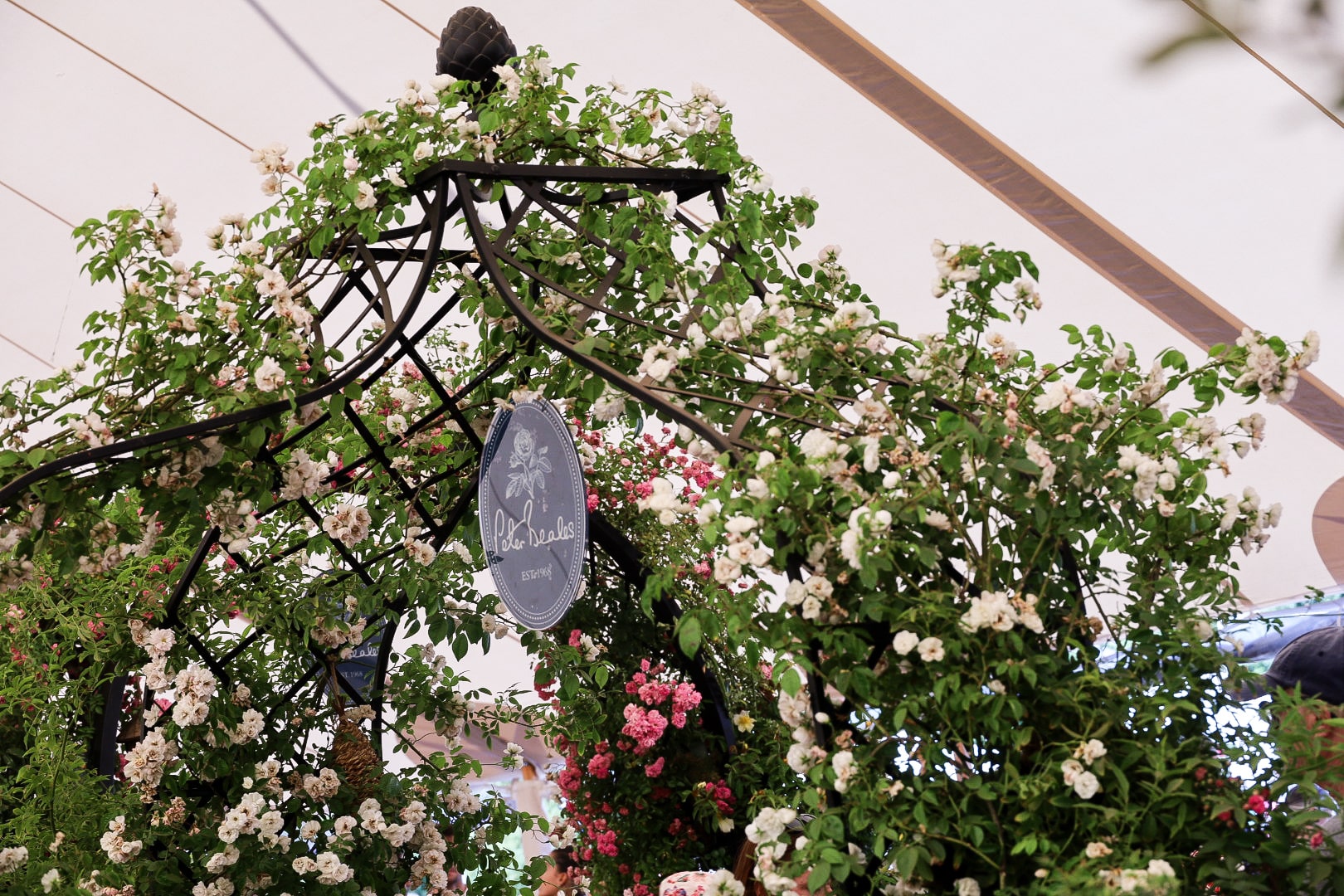
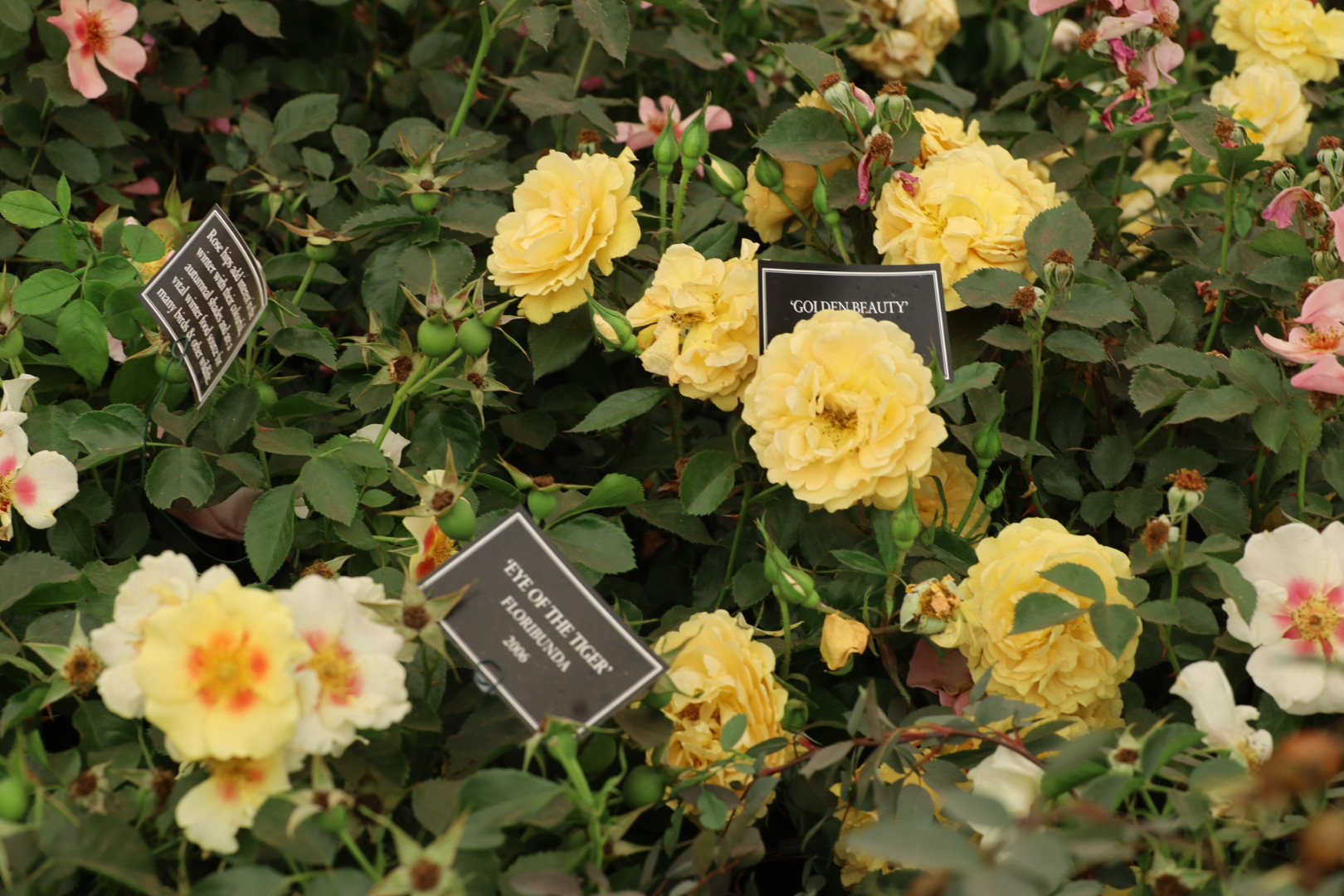
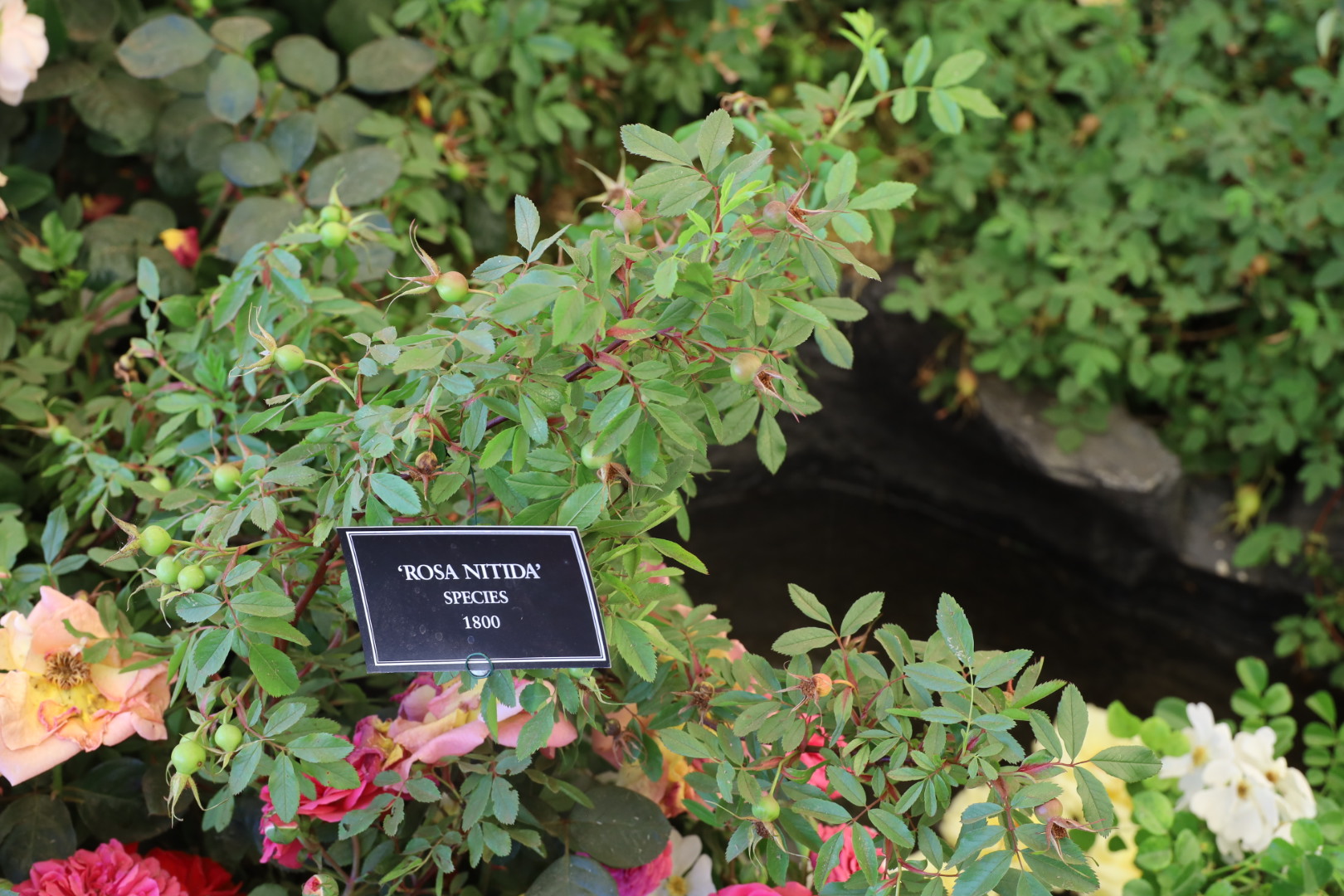
David Austin Roses: Fragrance as Philosophy
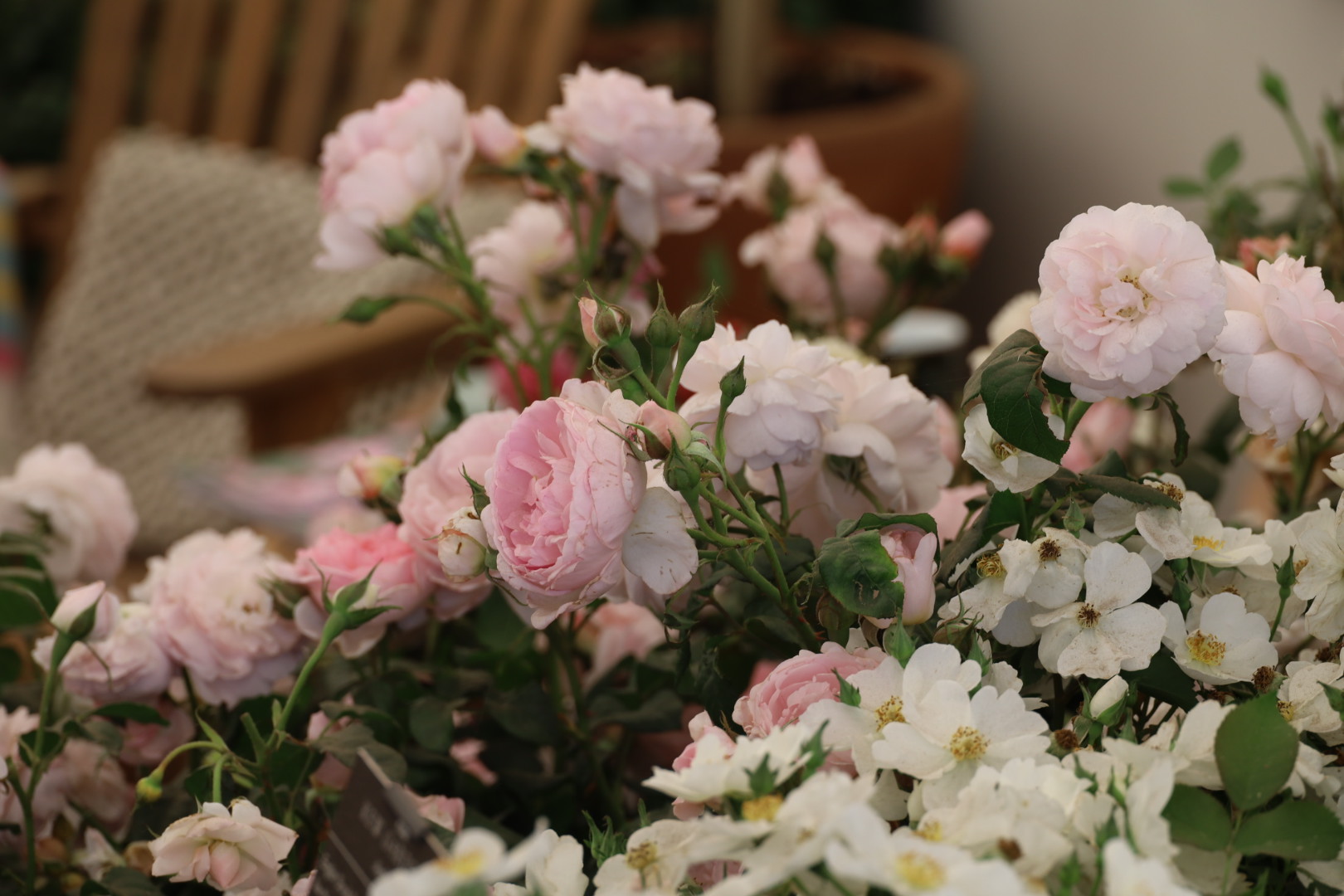
David Austin Roses approached their space with characteristic sophistication, organizing their gold medal-winning display around the most ephemeral yet essential quality of roses: fragrance. The courtyard garden concept worked brilliantly, with paved paths directing visitors past carefully chosen varieties, each selected for distinctive olfactory character rather than mere visual impact.
The two-section layout proved inspired: one side featured an elegant statue - a Jane Austen heroine made flesh, or rather stone - surrounded by blooms and punctuated with tree roses that added crucial vertical drama. The opposite wall showcased climbing roses in graduated heights, creating a living tapestry that drew the eye upward while providing contemplative seating in the center.
Varieties like 'Emma Bridgewater', 'Bring Me Sunshine', and 'Penelope Lively' represented the full spectrum of David Austin's breeding philosophy: English garden romance meets modern reliability. The fragrance focus encouraged that most intimate of garden pleasures - the deep inhalation that connects us directly to a flower's essential character.
Yet the display felt smaller than Chelsea's grand gesture, perhaps inevitably so given Hampton Court's more modest scale. The absence of significant new introductions - 'The King's Rose', carried over from Chelsea, resembling Rosa Mundi too closely for this writer's taste - suggested resources concentrated on perfecting presentation rather than expanding the portfolio.
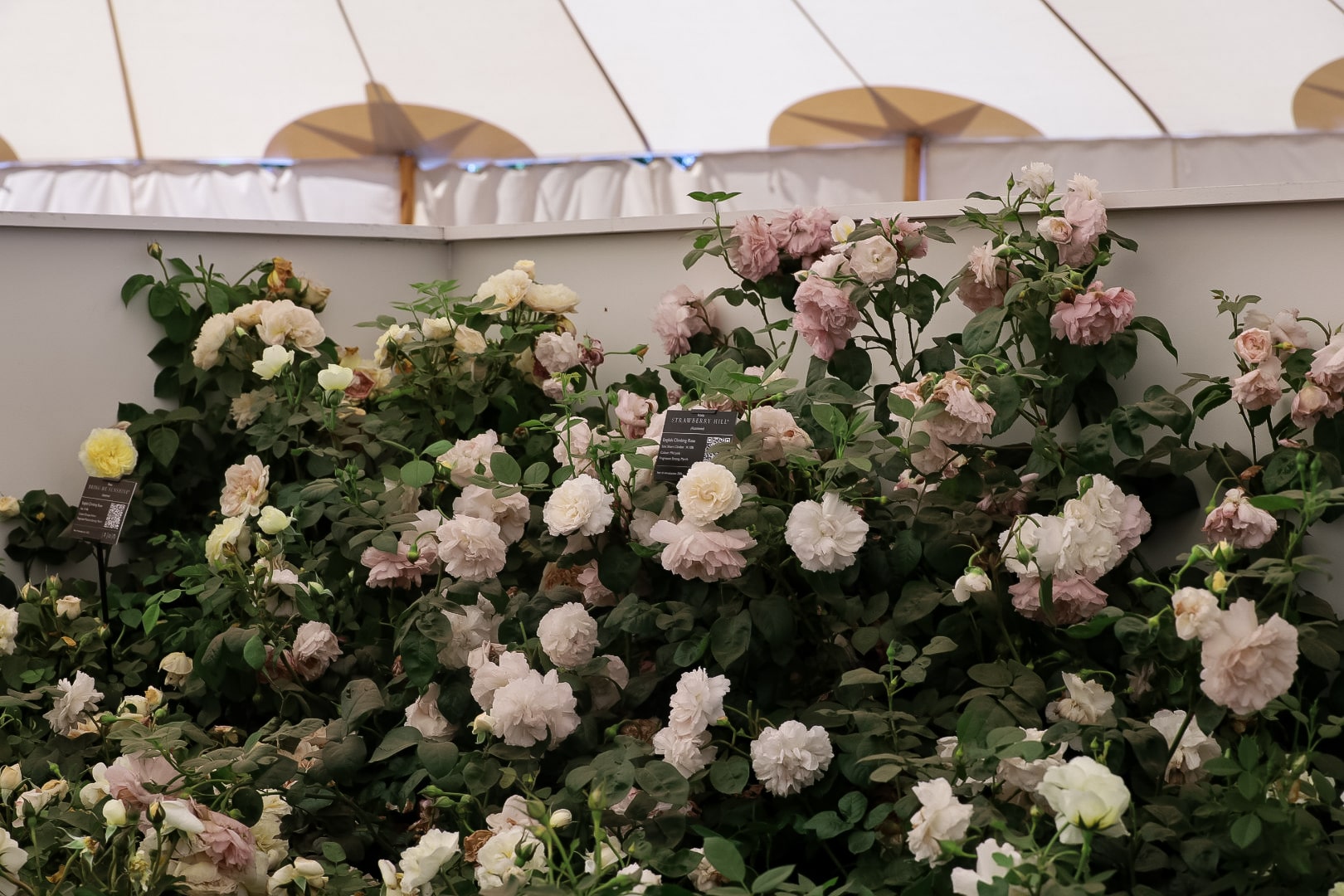
.jpg)
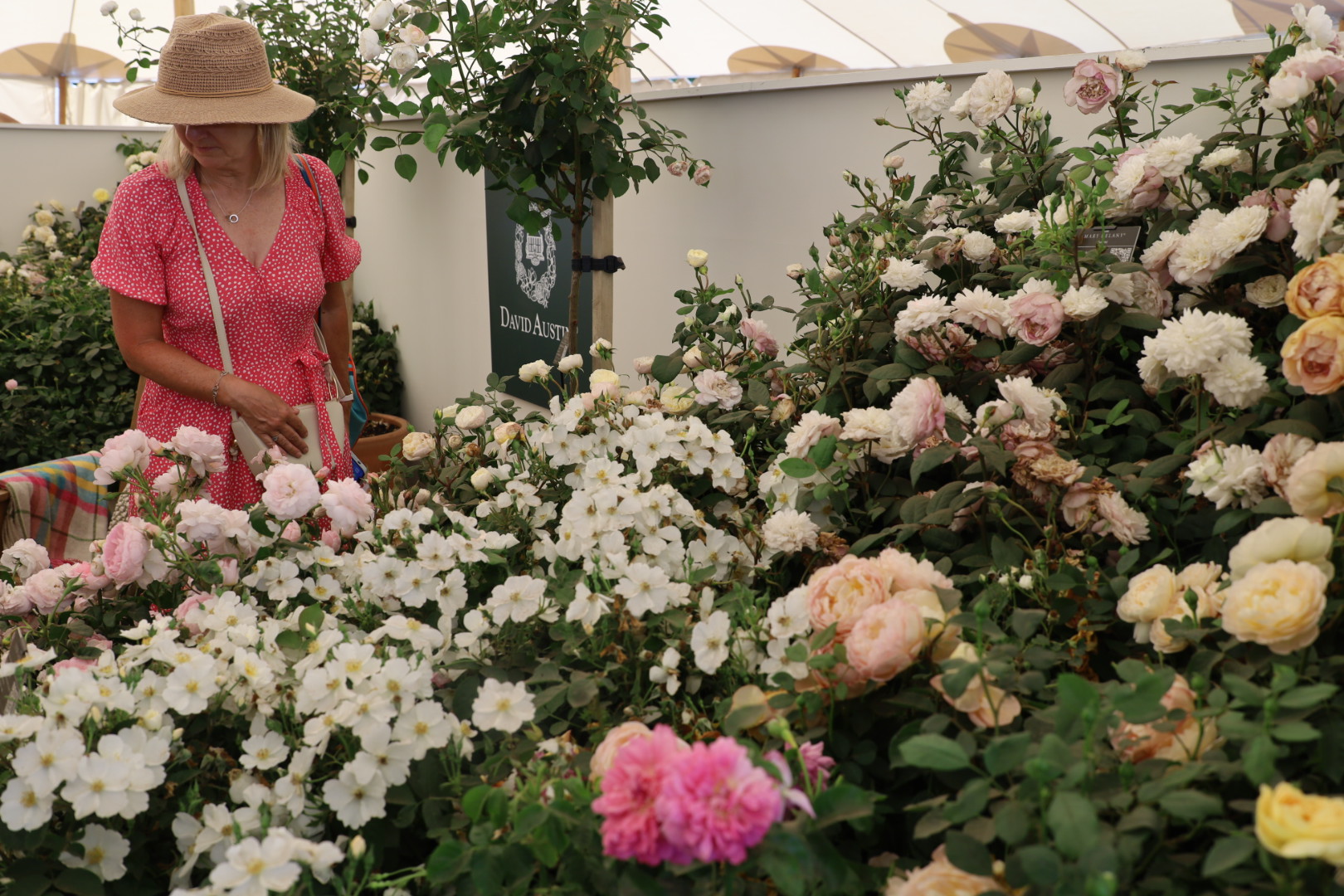
Reflections on Heat and Change
This year's Festival of Roses told two stories: the immediate tale of three excellent rose displays, and the longer narrative of British gardening adapting to climate reality. The roses themselves seemed to cope admirably with London's new normal of blistering summers, though one wondered about their stamina during the show's full week-long run.
The Rose of the Year 2026—'Coral Gardens', chosen after extensive UK trials—was notably absent from my marquee wanderings, though whether through oversight or heat-induced distraction remains unclear. Such gaps remind us that even the most dedicated rose pilgrimage cannot capture everything in a single afternoon's rush.
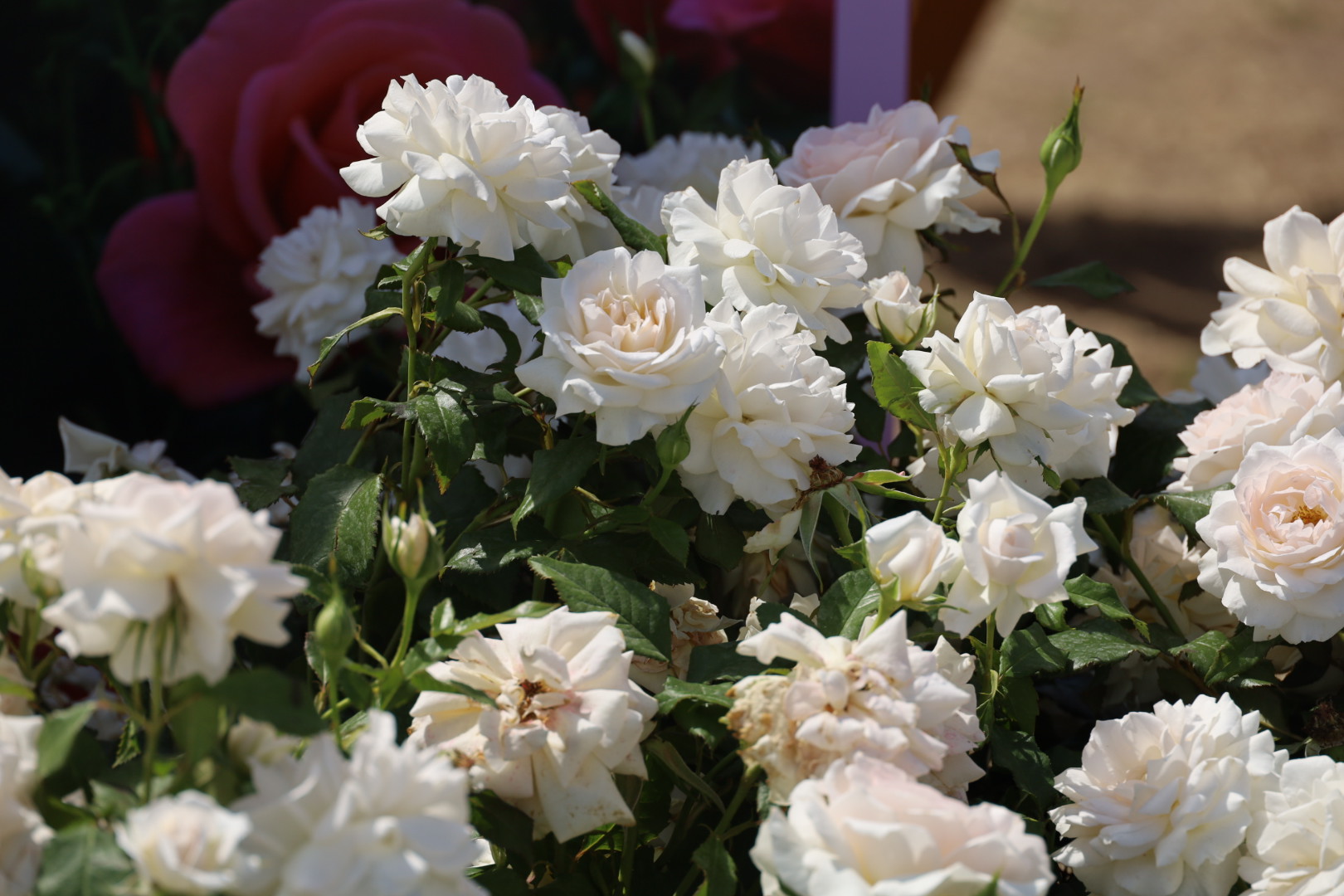
The shift to biennial scheduling represents more than mere calendar adjustment. It acknowledges the enormous effort required to mount such displays, the increasing challenges of summer heat, and perhaps the recognition that excellence requires breathing space between performances. For rose lovers, it transforms each future visit from routine pleasure to precious opportunity.
As I finally emerged from the marquee's perfumed embrace, the heat hit like a physical wall. Yet the memory of those concentrated moments - surrounded by the best of British rose breeding, inhaling decades of horticultural expertise made manifest in petal and perfume - provided the perfect antidote to climate anxiety and scheduling disappointment.
The Festival of Roses at Hampton Court 2025 delivered exactly what it promised: roses at their absolute peak, presented by masters of their craft, enjoyed by people who understand that beauty is both fleeting and worth chasing. When the show returns in 2027, it will arrive as special event rather than annual expectation. Perhaps that's precisely what such concentrated excellence deserves.
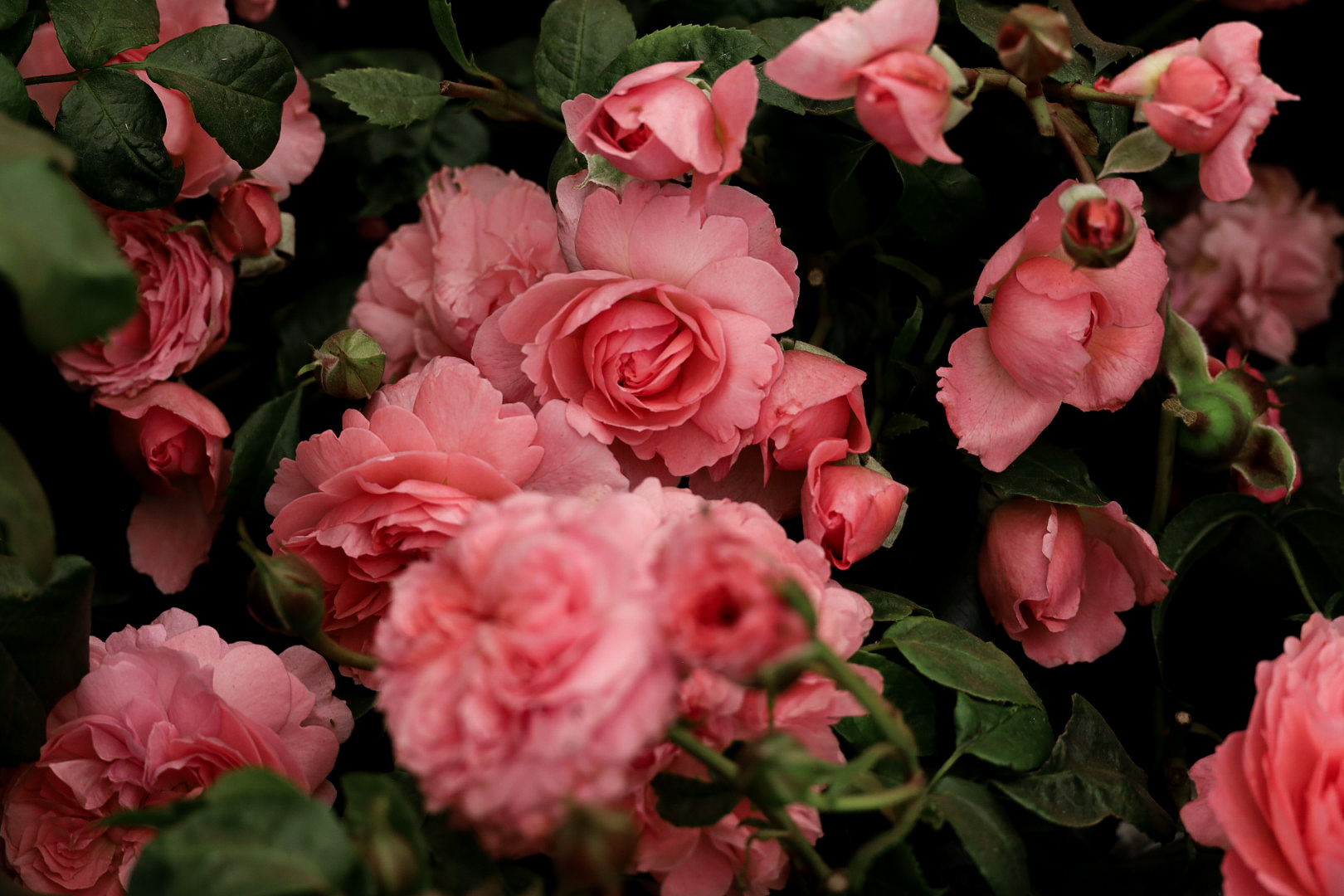
The author visited Hampton Court Palace Flower Show on July 4, 2025. The Festival of Roses marquee featured displays by Harkness Roses, Peter Beales Roses, and David Austin Roses, with both Peter Beales and David Austin receiving RHS Gold Medals for their presentations.

